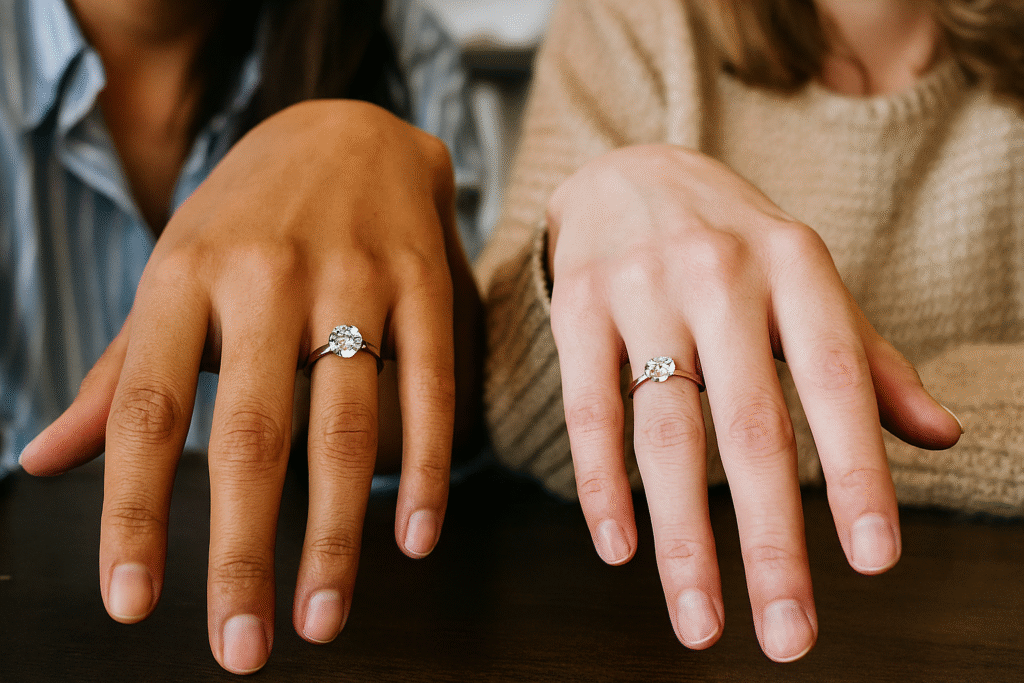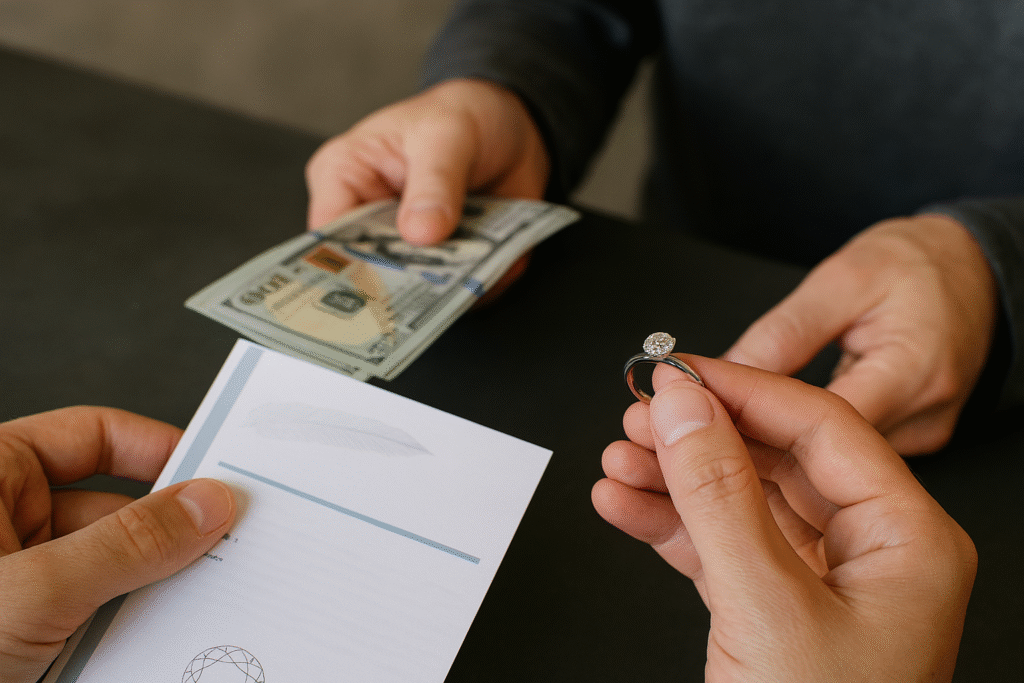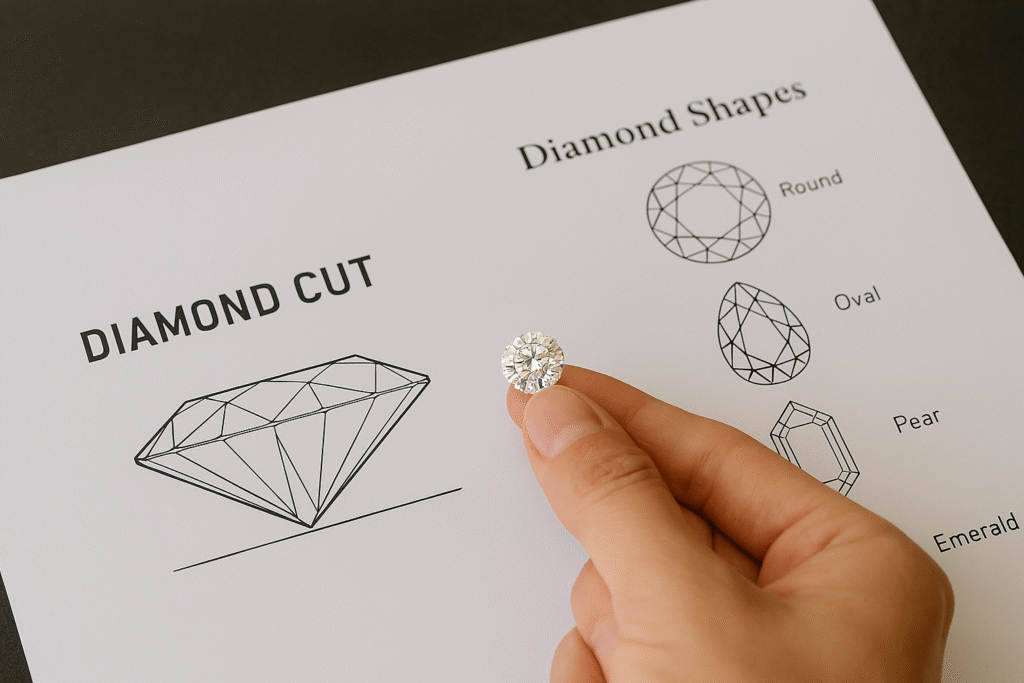Buying a diamond is deeply personal. Yet many buyers fall into what I call “the comparison curse.” The moment a friend shows off their engagement ring, the thought comes: “I want mine to be bigger, clearer, or better.”
The truth is simple: every diamond is unique, just like every buyer’s story. Chasing someone else’s stone often leads to disappointment or overspending. The goal is not to outshine your friend—it’s to find a diamond that matches your taste, budget, and lifestyle.
The Emotional Trap of Comparison
Research shows that 42% of diamond buyers admit comparing their purchase to someone else’s ring. This behavior often drives impulsive decisions and inflated budgets.
As an expert with 40+ years in gemology and the diamond trade, I’ve seen clients regret buying a “status” stone instead of the right one for them.
The key is this: Your diamond should reflect your values, not your neighbor’s.
Case Example
One client came to me after buying a 2-carat diamond just to keep up with her friend. A year later, she traded it for a smaller, better-cut diamond that actually looked brighter and matched her taste.
This is proof that size or “social comparison” is never the full story.
Practical Advice
- Focus on cut and brilliance over size. A well-cut 1.5-carat can outshine a poorly cut 2-carat.
- Set your budget first. Avoid spending just to match someone else’s stone.
- Look for certification. Always buy diamonds with GIA or AGS grading reports.
- Think about wearability. Choose what feels comfortable for daily life, not just for social media photos.
FAQ
Q: Why do people compare their diamonds to others?
A: Because jewelry is emotional and visible. But comparison often leads to overspending.
Q: Can a smaller diamond look better than a larger one?
A: Yes. A well-cut smaller diamond often has more sparkle than a larger but poorly cut one.
Q: What is the smartest factor to prioritize?
A: Cut quality. Research shows cut contributes up to 60% of a diamond’s sparkle.
Q: Should I buy the same diamond shape as my friend?
A: No. Choose a shape that flatters your hand and fits your personal style.
Suggested reading:
How to Budget for an Engagement Ring
Understanding Diamond Quality Factors
This comprehensive global cuisine FAQ covers everything about Asian and Western food and drinks. Whether you’re exploring international cooking techniques or discovering new flavors, this global cuisine FAQ answers the most frequently asked questions about world food traditions, ingredients, and culinary practices from both Eastern and Western cultures.
Global Cuisine FAQ: Asian & Western Food & Drinks
Food reveals cultural contrasts in clear and delicious ways. From cooking methods to dining customs, Asian and Western cuisines showcase unique traditions while also offering fascinating overlaps. Below, you’ll find answers to the most common questions about these culinary worlds.
Understanding Core Differences in Cuisine
1. What distinguishes Asian and Western culinary traditions?
Asian meals often rely on rice or noodles as a foundation. Flavors usually come from soy sauce, ginger, garlic, and a wide variety of spices. Meanwhile, Western gastronomy emphasizes bread, potatoes, and pasta. Dairy plays a key role, with butter, cream, and cheese giving richness to many dishes. Herbs such as rosemary and thyme highlight European cooking. These contrasts create distinct dining habits and flavor profiles.
2. Are Asian dishes always spicy?
No, not at all. While cuisines from Thailand and parts of India feature bold use of chilies, not every dish follows this pattern. Japanese sushi, Chinese dim sum, and Korean bulgogi are mild examples. In fact, Asian cuisines range from fiery to delicate, showcasing a rich palette of flavor.
Western Breakfast Staples and Comfort Foods
1. What constitutes typical Western morning meals?
Western breakfasts often include eggs, bacon, and toast. Pancakes, waffles, and cereal are also popular choices. These hearty starts are usually enjoyed with coffee, tea, or juice, providing both energy and comfort.
2. What represents popular Western comfort foods?
Comfort foods in the West speak to nostalgia and indulgence. Creamy macaroni and cheese, pizza, and hearty casseroles are favorites. Similarly, burgers and fried chicken have wide appeal. Because they are warm, filling, and familiar, these dishes strongly connect to emotion.
Cultural Dining Practices
1. Do all Asian cultures employ chopsticks?
No. Chopsticks dominate in East Asia—China, Japan, and Korea. However, Southeast Asia prefers spoons and forks, while India and parts of the Middle East often use flatbreads or hands. This diversity highlights how food customs closely reflect culture.
2. Why are some Asian foods fermented?
Fermentation preserves food while also enhancing nutrition and flavor. Korean kimchi, Japanese miso, and Indonesian tempeh show how tradition meets health benefits. These foods are valued not only for taste but also for their role in well-being.
Common Western Beverages
1. What beverages are common with Western meals?
Western dining often features water, soda, or fresh juice. Alcohol also has a strong cultural connection, with wine served at European dinners and beer central in North America. In the southern United States, sweet iced tea is a staple.
Dietary Flexibility and Options
1. Can one discover plant-based options easily?
Yes. Asian cuisines offer tofu stir-fries, lentil dals, and vegetable curries that are naturally vegetarian. Western food, similarly, embraces plant-based eating. Salads, vegetarian pastas, and vegan burgers have grown popular, making meat-free dining accessible worldwide.
Unique Asian Drinks to Explore
1. What are some unique Asian beverages?
Asia provides a wide variety of distinctive drinks. Bubble tea, from Taiwan, combines tea with chewy tapioca pearls. Japanese sake, made from rice, holds deep cultural meaning. Strong Vietnamese iced coffee, sweetened with condensed milk, adds a bold twist compared to Western brews.
Portion Sizes and Dining Habits
1. How do portion sizes compare?
Western meals often emphasize large servings, reflecting abundance. By contrast, Asian meals are usually smaller yet balanced, encouraging sharing and mindful eating. This creates different social experiences around the table.
The Art of Fusion Cuisine
1. Is it feasible to integrate Asian and Western flavors?
Absolutely. Fusion cuisine blends traditions in creative ways. For instance, teriyaki burgers combine Japanese flavors with American fast food, while kimchi tacos bring Korean spice to Mexican street food. These playful mixes show how food bridges cultures.



